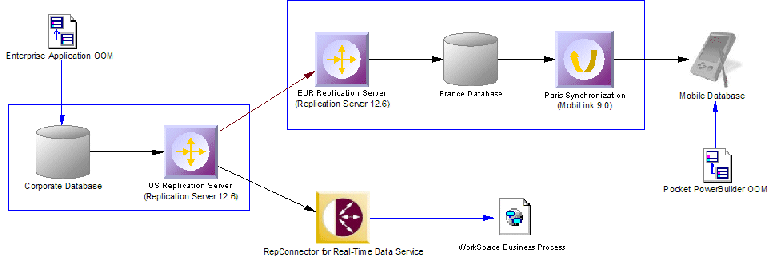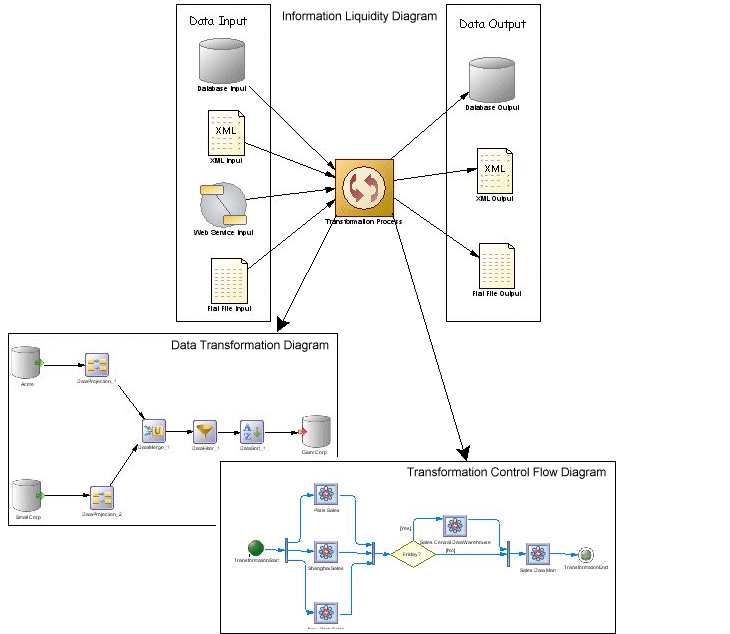The information liquidity diagram is the core diagram of the ILM, which lets you model data replications and views of source and target data involved in data transformations.
Data Replication
The ILM diagram lets you describe and configure replication processes for the Replication Server engine (see Working with Replication Server) and the MobiLink engine (see Working with MobiLink), where a source database is replicated into one or more target databases.
For detailed information about the objects required to model a replication, see Building Information Liquidity Diagrams.
In the following example, the Consolidate Database is replicated into the Mobile Database and the RepConnector database.

Data Transformation
The information liquidity diagram is the entry point to document ETL and EII transformations. This diagram shows a high-level view of the input and output sources involved in a data transformation. These sources are linked to the transformation process, and are further specified in the data transformation diagram (see Data transformation diagram) in which they are transformed and loaded to outputs. Data transformations can be sequenced in the Transformation Control Flow diagram (see Transformation control flow diagram).
The following example shows how the information liquidity diagrams can interact with the other diagrams when modeling a data transformation. The information liquidity diagram contains the transformation process with its input and output sources. You can build one or more data transformation diagram(s) to detail your transformations, and a transformation control flow diagram to show the order in which these transformation are executed:
